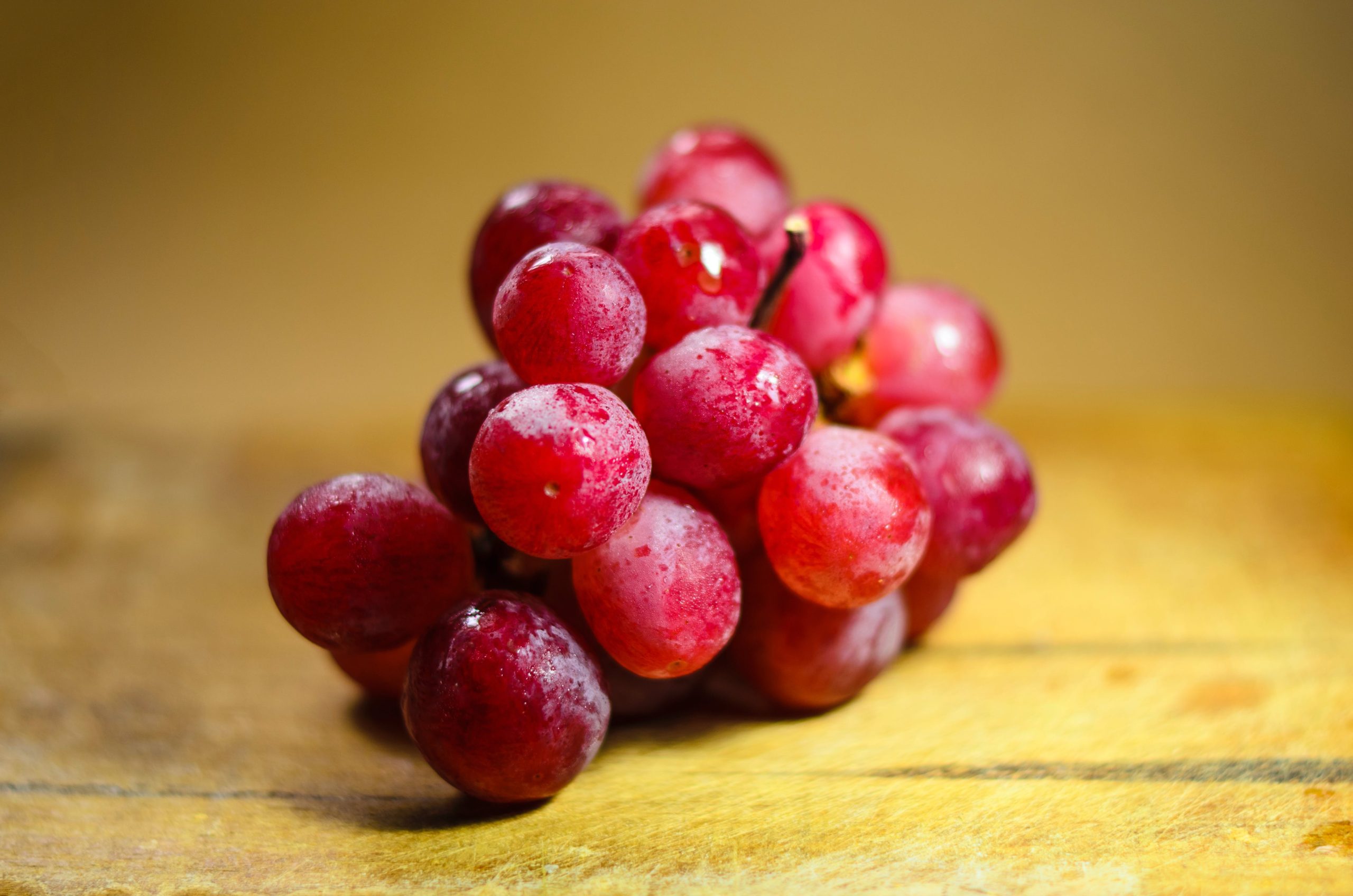
What are Grapes?
Grapes, the succulent and versatile fruits, belong to the Vitaceae family and come in various colors like red, green, and purple. Scientifically known as Vitis vinifera, grapes grow in clusters on deciduous woody vines. They are consumed worldwide and hold cultural significance, being used not only as a fresh snack but also in winemaking and various culinary applications.
Grapes are classified as berries and exhibit a unique combination of sweet and tart flavors. They contain essential nutrients like vitamins C and K, antioxidants, and resveratrol, contributing to their health benefits. Grapes are versatile in the kitchen, featuring in salads, desserts, and as raisins when dried. Additionally, they play a central role in the production of wine, with different grape varieties influencing the diverse flavors found in wines globally.
Whether enjoyed fresh, dried, or in liquid form, grapes offer a delightful sensory experience and a nutritional boost, making them a cherished fruit in many cultures.
Why Do We Eat Grapes?
People eat grapes for various reasons, enjoying these small, flavorful fruits for their taste, versatility, and numerous health benefits. Grapes are not only delicious but also offer a refreshing and convenient snack option. Their natural sweetness and juiciness make them a favorite among people of all ages.
Beyond taste, grapes are rich in essential nutrients, including vitamins, antioxidants, and minerals. Consuming grapes supports overall health by providing vitamin C for the immune system, vitamin K for blood clotting, and antioxidants like resveratrol, which may have protective effects on the body. These health benefits contribute to the popularity of grapes as a wholesome food choice.
Grapes also play a significant role in culinary applications. They can be used in salads, desserts, jams, and juices, showcasing their versatility in various dishes. Additionally, grapes are a key ingredient in winemaking, adding complexity and flavor to different types of wines.
In essence, people eat grapes not only for their delightful taste but also for the nutritional value and culinary possibilities they bring to the table.
| Reasons for Eating Grapes |
|---|
| Taste |
| People enjoy grapes for their delicious, natural sweetness and juiciness, making them a favored and refreshing snack for all ages. |
| Health Benefits |
| Grapes are rich in essential nutrients, including immune-boosting vitamin C, blood-clotting vitamin K, and antioxidants like resveratrol. |
| These contribute to overall health and well-being, making grapes a popular choice for a wholesome and nutritious snack. |
| Versatility in Culinary Applications |
| Grapes are versatile in the kitchen, lending themselves to salads, desserts, jams, and juices, showcasing their adaptability in various dishes. |
| They are also a crucial ingredient in winemaking, adding complexity and flavor to different types of wines. |
| Convenience |
| Grapes are a convenient and easy-to-carry snack, requiring no preparation. Their portability makes them an ideal on-the-go option for busy lifestyles. |
When Do We Eat Grapes?
Grapes are enjoyed throughout the year, and their consumption is not limited to specific seasons. The availability of different grape varieties ensures that they can be enjoyed at various times, offering both freshness and flavor. The timing of grape consumption may vary based on personal preferences, cultural traditions, and the intended culinary use.
During the summer months, when grapes are in peak season, many people savor them as a refreshing snack to beat the heat. The natural juiciness and sweetness of grapes make them particularly appealing during warmer weather.
Grapes are also a popular addition to fruit salads, desserts, and cheese platters. They add a burst of flavor and a touch of sweetness to various dishes, enhancing both taste and visual appeal.
In addition to being enjoyed on their own or as part of dishes, grapes play a significant role in winemaking. The grape harvest season, known as the grape harvest or grape crush, typically occurs in the late summer or early autumn, depending on the grape variety and region.
In summary, grapes can be consumed year-round, offering a versatile and delightful fruit option for different occasions and culinary creations.
| Grapes Enjoyment Throughout the Year |
|---|
| Year-round Enjoyment |
| Grapes are consumed consistently throughout the year, and their availability is not restricted to specific seasons. |
| Variety and Freshness |
| Different grape varieties ensure enjoyment at various times, providing both freshness and distinct flavors. |
| Seasonal Preferences |
| The timing of grape consumption varies based on personal preferences, cultural traditions, and the intended culinary use. |
| Summer Delight |
| During summer, when grapes are in peak season, they are relished as a refreshing snack, with their natural juiciness and sweetness being particularly appealing in warmer weather. |
| Versatile Culinary Use |
| Grapes are popular additions to fruit salads, desserts, and cheese platters, enhancing both taste and visual appeal with their burst of flavor and touch of sweetness. |
| Significant Role in Winemaking |
| Grapes play a vital role in winemaking, with the grape harvest season (grape crush) occurring in late summer or early autumn, depending on the grape variety and region. |
| Year-round Culinary Versatility |
| In summary, grapes can be enjoyed year-round, offering a versatile and delightful fruit option for different occasions and culinary creations. |
Ingredients of Grapes
Grapes, simple yet delightful, have minimal ingredients as they are a natural fruit. The primary components of grapes include:
- Water:
- Grapes have a high water content, contributing to their juicy and hydrating nature.
- Natural Sugars:
- Grapes contain natural sugars, predominantly glucose and fructose, responsible for their sweet taste.
- Acids:
- Grapes possess various acids, such as tartaric acid, contributing to their distinct flavor profile.
- Fiber:
- The skin of grapes provides dietary fiber, promoting digestive health.
- Antioxidants:
- Grapes are rich in antioxidants, including resveratrol, flavonoids, and quercetin, offering potential health benefits.
These simple yet essential components collectively create the unique taste, texture, and nutritional value of grapes. Enjoyed fresh or transformed into products like raisins or wine, grapes remain a versatile and wholesome fruit.
Types of Grapes
Grapes, belonging to the Vitaceae family, come in various types, each with its unique flavor, appearance, and uses. Some common types include:
- Red Grapes:
- These grapes have a red or purple hue and include varieties like Flame Seedless and Red Globe. They are often enjoyed fresh, in salads, or used to make red wine.
- Green Grapes:
- Varieties like Thompson Seedless and Muscat fall under this category. Known for their sweet and crisp taste, green grapes are commonly consumed as table grapes, in salads, or used in winemaking.
- Black Grapes:
- Also known as Concord grapes, these are dark purple to nearly black in color. They are used to make dark grape juice and are appreciated for their bold, sweet flavor.
- Seedless Grapes:
- Available in various colors, these grapes, such as Crimson Seedless, are favored for their convenience and are often consumed as a snack or in salads.
- Cotton Candy Grapes:
- A hybrid variety known for its remarkably sweet taste reminiscent of cotton candy. These green grapes are gaining popularity for their unique flavor.
- Wine Grapes:
- Varieties like Chardonnay, Merlot, or Cabernet Sauvignon are cultivated specifically for winemaking, each contributing distinct characteristics to the final product.
These are just a few examples of the diverse world of grapes, each offering a different taste experience.
Signs of Ripe, Signs of Raw and Signs of Rotten Grapes
Signs of Ripe Grapes:
- Color Change:
- Grapes exhibit a shift in color as they ripen. Red or black grapes deepen in hue, while green grapes transition to a more vibrant shade.
- Firmness:
- Ripe grapes should feel plump and firm to the touch, indicating juiciness.
- Aroma:
- Ripe grapes emit a sweet and fruity fragrance, a sign of their readiness for consumption.
Signs of Raw or Unripe Grapes:
- Color:
- Unripe grapes may retain a more vibrant green for green varieties or a lighter shade for red or black grapes.
- Hardness:
- Under-ripe grapes tend to be harder and lack the juiciness associated with ripeness.
- Taste:
- Unripe grapes can have a sour or astringent taste, lacking the sweetness of fully ripened ones.
Signs of Rotten Grapes:
- Discoloration:
- Rotten grapes often develop dark or brown spots, indicating decay.
- Wrinkling:
- The skin of spoiled grapes may become wrinkled or shriveled.
- Mold:
- Visible mold growth, fuzzy patches, or an unpleasant odor are clear signs of spoilage.
- Sliminess:
- Rotten grapes can develop a slimy or mushy texture, indicating bacterial growth and decay.
To enjoy grapes at their best, it’s essential to identify the signs of ripeness, avoid unripe ones, and promptly discard any grapes showing signs of spoilage.
Summary
Grapes, botanically classified as Vitis vinifera, are succulent, versatile fruits widely cultivated for their sweet or tart taste and used in various culinary applications.
Available in a variety of colors, including red, green, and purple, grapes contain essential nutrients such as vitamins C and K, antioxidants, and resveratrol, believed to offer health benefits. They grow in clusters on grapevines and are utilized in the production of diverse products like wine, juice, raisins, and vinegar. Grapes have a rich history dating back thousands of years, playing a significant role in cultural and religious practices.
With a balance of sweetness and acidity, grapes are enjoyed fresh as snacks, in salads, or transformed into diverse grape-based products, contributing to both culinary delights and nutritional well-being.






